By Dr. C. Naganna, former Professor, Comparative Literature and Translation Studies, University of Mysore
It was on this day last year, 2nd January 2023, Sri Siddeshwara Swamiji of Jnanayogashrama, Vijayapura, left for his heavenly abode.
He was an eloquent public speaker on spiritual and moral subjects, who delivered discourses in Karnataka and other States both in Kannada and English. He was a regular visitor to our city and was closely associated with Mysuru’s Suttur Mutt.
Today is the first death anniversary of Sri Siddeshwara Swamiji and here in a tribute, we publish an interview of Dr. C.P. Ramashesh, former Librarian, University of Mysore (UoM), who was closely associated with Sri Siddeshwara Swamiji, by Dr. C. Naganna, former Professor of Comparative Literature, UoM. This interview throws light on lesser known aspects of Sri Siddeshwara Swamiji’s personality.—Ed
When Star of Mysore Founder-Editor K.B.Ganapathy asked me to contribute articles to SOM some time back, I agreed and told him that I would write an article under the column ‘Matters That Matter’ on Sri Siddeshwara Swamiji of Jnanayogashrama, Vijayapura, by talking to his close associate Dr. C.P. Ramashesh, the former Librarian of University of Mysore (UoM) and a scholar, as he had long association with the late Swamiji for nearly three decades.
During the conversation with Dr. Ramashesh, I put a series of questions on the lesser-known aspects of the great Teacher-Saint, who came to this world without any fanfare and left this world as quietly as he came. Here below is the interview:
Dr. C. Naganna (CN): Your association with Sri Siddeshwara Swamiji has been for many years. In fact, it’s some three-decades-old. So, you are aware of how Swamiji was introduced to Mysuru region as he belongs to Vijayapura (Bijapur). Could you tell us how his Mysuru connection came about?
Dr. C.P. Ramashesh (CPR): There is a Ramakrishna Ashram in Kollegal; it’s actually a private organisation following the philosophy of Sri Ramakrishna Paramahamsa. Siddeshwara Swamiji used to be invited by Kumara Nijagunaru of Chilakavadi, Chamarajanagar. A large number of devotees used to attend the discourses of Siddeshwara Swamiji and the Principal of the JSS College of Kollegal once requested the Swamiji to address the students. The Swamiji accepted the invitation and delivered his discourse. At the end of the discourse, the students literally mobbed the Swamiji as his voice was a veritable nectar and the content was simple and accessible.
CN: When did the Swamiji come to Mysuru?
CPR: Sri Shivarathri Deshikendra Swamiji had already become the Pontiff of the Suttur Mutt (1985) and he invited Sri Siddeshwara Swamiji to Mysuru and deliver his discourse. The year was 1991 and “Bhagavad Chintana” was arranged for one whole month during the evenings (6.30 pm to 7.30 pm) at JSS College on Ramanuja Road, where the hospital is located now. That was a huge success, considering the increasing number of the spiritually-oriented listeners.
CN: When did you actually meet Siddeshwara Swamiji and how did he receive you?
CPR: The year was 1995. We have a spiritual organisation called “Nijaguna Satsanga Balaga” which is led by Sri Sadashivagurugalu. Under his leadership, some 25 people went and met Siddeshwara Swamiji at Nakshatra Farm near Hinkal. After we were introduced, the Swamiji singled me out and asked ‘what are you doing?’ I told him I am a Librarian in the University. He suddenly became keen and asked what are the Science Journals you get. He said get me some old numbers; let the students make use of the new ones. He was very much interested in all branches of Science.
CN: What about his interest in books?
CPR: He was a voracious reader of books. He liked fresh and elegant books. He kept away the soiled ones. He would caress them and praise the production and the quality of new books. I took care to place in his hands the books he indicated. But the interesting thing is that he would return them back quickly after reading them. He was acutely conscious that the library books must go back to the library as early as possible, because they ought to serve the needs of other readers.
CN: I have heard about spiritual congregations he held for different groups; were they exclusive to the designated groups or did others also attend them?
CPR: Yes, such congregations were there for the sanyasins, para-medical personnel, doctors, students and so on.
CN: What was Swamiji’s interest in addressing the rural audience?
CPR: The Swamiji was very eager to address the rural audience. He explained to me once that he would be very satisfied in addressing the villagers, however small the audience was.
CN: Did he deliver his discourses in English?
CPR: He did. Especially, when he visited foreign countries like Australia, China, Japan, New Zealand, Canada and countries of North America and South America. His Kannada can be described as thili jala () and it was crystal clear; his English was equally lucid; he never believed in bamboozling his listeners with verbal bombast.
CN: What are the places where he commanded a large number of listeners and followers?
CPR: In places like Kolhapur (in Maharashtra), Belagavi, Vijayapura, Bagalkote, Jamakhandi, Dharwad and Kalaburagi (Gulbarga). 25,000 was not an unusual gathering. So, one can very well imagine the value of Siddeshwara Swamiji’s discourses.
CN: Can you say something about the Swamiji’s phenomenal memory?
CPR: His memory was indeed phenomenal ! He would, for instance, quote off-hand long passages from Rabindranath Tagore. He knew hundreds of Vachanas by heart. He would recall them at appropriate moments, that would illuminate his discourses. He was equally well-versed in the Upanishads.
CN: What was his understanding of the small little tools and objects we use in our daily life like ladder, sickle, chair, table, basket and so on.
CPR: We normally tend to think that saints and philosophers, being other-worldly, always are hitched to cosmic things and they do not pay attention to things you just mentioned. But the Swamiji never categorised things as ‘utkrishta’ and ‘nikrishta.’ For example, he listed about 140 household articles and said there is spirituality in all these tools.
CN: When did he stay the longest in Mysuru?
CPR: I remember two occasions: In 1999, he stayed for 110 days and in 2021, for 87 days. During 2021, he was busy finalising the English translation of his monumental Kannada work Allama Prabhudevara Vachana Nirvachana. The book is ready for launching now.
CN: Swamiji’s humour was subdued; but he insisted that the humourless speech is suffocating and spiritless!
CPR: Yes, indeed. For instance, he would deliver a one-hour lecture on a common crow. He was equally enthusiastic to speak on a donkey or a miser. According to him, a miser enhanced the economy of a nation in his own way; a donkey’s contribution in lessening the burden of humanity is incalculable, so on and so forth.
CN: It is said, the Swamiji loved dictionaries?
CPR: He normally kept some 20 dictionaries in his study. He needed his Monier Williams’ Sanskrit-English Dictionary, Apte’s The Practical Sanskrit-English Dictionary, The Oxford English Dictionary (edited by Hornby), besides, Macmillan English Dictionary: For Advanced Learners and Webster’s Dictionary (2 volumes) and, of course, Kannada-Kannada Dictionary (7 volumes) published by Kannada Sahitya Parishat, English-Kannada Dictionary of Mysore University (4 volumes), plus Igo Kannada (4 volumes) by G. Venkatasubbaiah and Shivaram Karanth’s Sirigannada Padakosha.
CN: Sri Swamiji left his mortal coil on the 2nd of January 2023. Did he deliver discourses till the end?
CPR: He addressed a gathering of some 400-500 people on 11th December 2022 and after that he didn’t speak much. By 27th December he almost stopped his speech. He left this world on 2nd January 2023 at 6.30 pm. He was cremated according to his will and his ‘chitabhasma’ was immersed in the sea.
He had made it very clear that no monument or memorial should be built in his name and people have honoured his wishes. We are reminded of Bendre’s poem on the Buddha where the poet says: “Buddha’s grave is within the human heart.” Likewise, Siddeshwara Swamiji has found a place in the heart of his devotees. His life has been his message and undoubtedly a Teacher-Saint of a very high order.
Deep silence pervaded UoM International Students’ Hostel even as my interview with Dr. Ramashesh came to an end.
e-mail: [email protected]



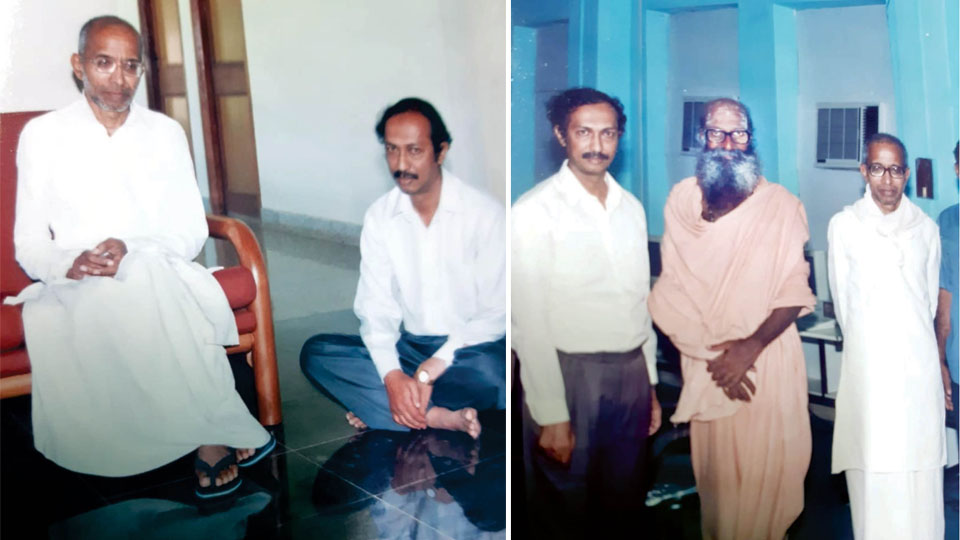
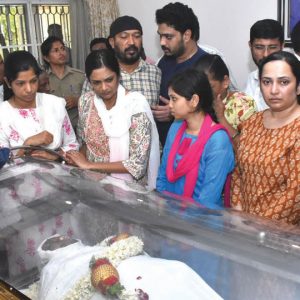
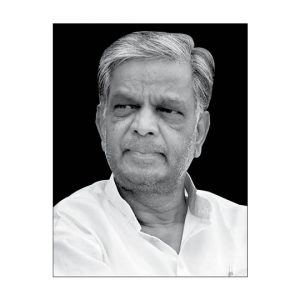
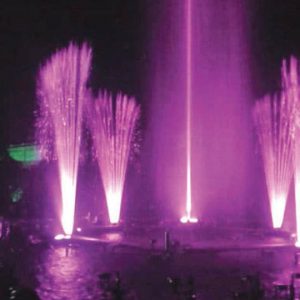
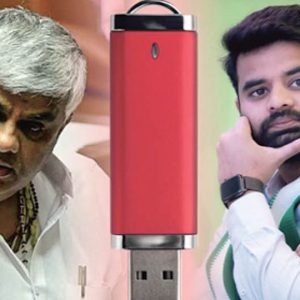
Recent Comments